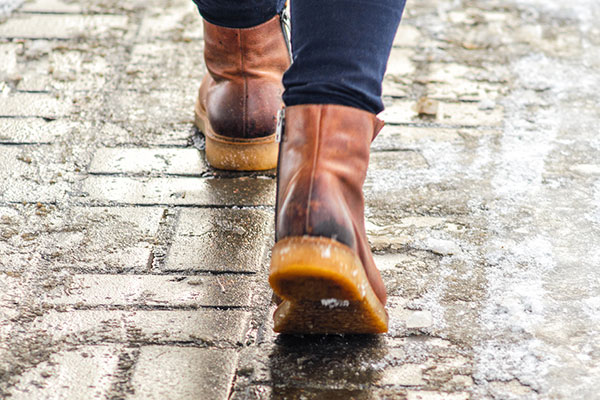
This post was written by Ashley M. Bojrab, DPM, FACFAS, ABPM, CWS, PPG – Podiatry.
It’s National Diabetes Month and winter is looming, reminding us of how uncomfortable, and even dangerous, colder days can be for our bodies. A major issue for many during the frigid months is frostbite, which can occur anywhere on the body, including the nose, ears, fingers and, of course, feet.
Protection is the best prevention when caring for the feet, so it’s important to know and be able to recognize the different stages of frostnip, superficial frostbite and deep frostbite. Diabetic patients and those with neuropathy – a loss of sensation – are at the greatest risk.
The diabetic population has an increased risk of getting frostbite because they may not be able to feel how cold it is outside. Every year, I will get a patient in the middle of winter wearing sandals and shorts. When I ask, if they are cold their response is, "Nope, can't feel it." As a medical provider, this concerns me, because if the skin is exposed to the cold for too long, the patient can experience damage and frostbite.
Degrees of frostbite
Frostnip – This is irritation to the skin and can cause redness and cold feeling to the body. Frostnip does not create any damage to the skin. People are encouraged to slowly rewarm the skin. It’s important to avoid heating skin over a stove, fire or hot water, as this can lead to burns.
Superficial frostbite – With this degree of exposure, skin color changes and clean blisters can form. Numbness can occur as well as stinging, burning and swelling. There is typically no permanent damage from superficial frostbite.
Deep frostbite – This is the most severe stage of frostbite, in which all of the layers of the skin are affected. The skin can turn white, gray or even black. You may experience numbness, pain, even complete loss of sensation. After the affected area turns black the tissue dies off.
Treatment
Typically, frostnip can be managed by rewarming the skin at home, over the counter medications to ease the pain, and topical ointments to help heal the skin. If the skin becomes moderate-to-severely involved, then I would recommend seeing a provider to get evaluated. Depending on the severity of the exposed area, your provider may get an X-ray, bone scan or MRI. These images can help determine if the bone or muscle have been damaged. There are some cases where the severity of frostbite may become so great that amputation is needed.
Prevention is always the best path to safety when outside in the elements. Check the weather, plan accordingly and consult your provider immediately if you have concerns.



